|
The Val D'Orcia will always have a fond place in our hearts. It was the very first place we stayed and explored in Italy, in fact we stayed just outside of Pienza in the magical clay hills of the Orcia river valley. Sheep and sheep cheese (Pecorino), natural hot spring spas that have been used for thousands of years, and rows of tall thin cedars bordering twisty Tuscan roads are things we will never forget. The people are much more slow paced and relaxed when compared to northern Tuscany. Click the photo below to enjoy the beauty of Southern Tuscany...
0 Comments
 Wrapped up tight for winter Wrapped up tight for winter When I was a boy, my Dad had a large fig tree in our little backyard in the city where we lived. He would love eating the rip figs right from the tree, squishing it open between his two thumbs to show me the rich, sweet and colorful seedy fruit inside. Now as a kid, I was never all that partial to figs. I thought they were too mushy--it was a texture thing. As an adult, I discovered there's nothing like figs and cheese... especially when paired with some fresh ricotta and drizzled with honey. Of course, I'm talking about fresh figs... the dried figs are very sweet and would be best left as an ingredient in other dishes or baked goods, the way raisins are used. We lived just across the Hudson River from Manhattan. Winters were very cold back then. I remember Dad wrapping his fig tree very carefully to "put it to bed" for the winter--stuffing newspapers in between the branches, then wrapping with burlap, and then wrapping again with an old carpet. He'd cover the whole thing with a tarp. This would keep out the cold and snow and prevent the branches from freezing all the way to the ground. In the early spring, Dad would unwrap the tree carefully and if he did it properly, the branches only died back a few inches. As soon as it got warm, the tree would put out leaves again... the cycle renewing itself. Some would dig long trenches and kneel the fig trees over and then put the layering on top, but Dad always thought this was overkill.  Figs in a Pompeii fresco Figs in a Pompeii fresco Fig History In the beginning, there was the Fig. In fact, some Biblical scholars believe the Fig was the Forbidden Fruit, not the apple. One only needs to consider that it's perhaps the sweetest fruit on the planet, and to ponder the sensual flesh inside the fruit to understand why it may have well been Forbidden by God Himself. The edible fig is also one of the first plants cultivated by humans as far back as 11,000 years ago! That's about a thousand years before wheat, rye or peas were farmed. Figs were grown throughout the Middle East and of course from Greece to Italian peninsular. Cato the Elder wrote about figs that were cultivated during the time of the Roman Empire and even listed the varieties: Mariscan, African, Herculanean, Saguntine, and Black Tellanian. Fruits were eaten fresh, of course, but what made figs a valuable food source was their long storage capabilities when dried. Obviously healthy, figs are full of calcium, potassium and fiber. They were also used to produce foie gras by force feeding geese to fatten their livers. In time, figs would be grown from India all the way across the Mediterranean to Portugal. After the discovery of the New World, figs crossed the Atlantic and were grown as a steady supply of nutritious food. Fig trees can easily get through a seasonal drought, and the Mediterranean climate in Italy is best for them. Old specimens can reach gigantic proportions and grow from 40 to over 100 feet tall. When planted in colder climates, they have to be protected from the cold or they will die back nearly to the ground, putting out new shoots the next spring, but taking a large toll on the shorter cold climate's fruit production season. Its aggressive root system in warmer climates can do damage to property and foundations of buildings so they are not normally grown in urban settings. In some parts of the Orient, figs have even overgrown houses and temples. The cantankerous roots are what allows the fig to survive even in dry, rocky landscapes. A little known fact about wild figs is that for the most part, they are sterile and need a particular species of wasp to enter inside the fruiting body in order to be able to spread pollen from plant to plant. For this reason, all cultivated figs bought from growers are clones of a mother plant--that is, they are grown from branch cuttings of a plant that is a know variety for good fruit production. If cared for properly, fig trees can produce two crops of figs each year. Fig Use in Recipes Fresh figs must be eaten within a short period of time simply because they don't keep well. Dried figs last for a year or more. Fig jams are a delicious way to keep the taste of figs on hand any time of the year. Cooked figs in ancient times were used as a sweetener as we use sugar today, and can be used in a similar fashion by modern chefs. Of course, we all know the iconic Fig Newton, so we can get a fix of fig that way, but nowadays the humble fig is being elevated into alta cucina by chefs worldwide. Here are a few ways to use figs: Lisa and I grew a fig tree at our last home and enjoyed the fresh fruits. After doing the research for this article and remembering how my Dad grew and loved figs, I'm thinking that next spring I'll put in a couple of young trees in my current garden. I'll let you know how that goes... Lunga vita il fico! --Jerry Finzi You can also follow Grand Voyage Italy on: Google+ StumbleUpon Tumblr Copyright 2015-16, Jerry Finzi - All Rights Reserved
by Jerry Finzi, February 7, 2016 (Read the UPDATE at the end of this article about Dion signing my son Lucas' guitar!) When I was a kid, there was no better tune on the radio for a young, hip kid trying to get girls to notice him than The Wanderer. The man singing that song was Dion DiMucci, better known as Dion... of Dion and the Belmonts, do-wop fame. His voice was edgy with its phrasing... of the streets... rougher than the silky smooth, clean shaven voices at that time--even though his own look was clean shaven. Somehow, I saw through all that hit-factory polish. He sang of real life experience. He wasn't so much singing a song as much as teaching me a life lesson. When he sang about Runaround Sue, you knew two things... you wanted to find a girl like that to have a sweet taste of what passion is really about, but at the same time you just knew you didn't want that kind of girl for your forever gal. You also knew that you needed to find that place he talks about in Lovers Who Wander... you just had to get there somehow. Perhaps he was giving us the address in his early bluesy version of Kansas City... at "12th Street and Vine". "I have a full life off The Road. I was never in it for the money or career. That's why I'm comfortable with myself. I know who I am out of the spotlight." When I finally fell for that first girl--and fell hard--I lamented with Dion, Why Must I Be a Teenager in Love? He taught me that real men can--and do--cry, but only for the truly important things. Then when I finally had a chance to be alone with "my girl", walking along the Palisades Cliffs overlooking the Hudson River where I grew up, with that magnificent, nighttime twinkling view of the Manhattan skyline... testing out each others' romantic limits on one of the wooden benches... I'd find myself asking her to Stay Just a Little Bit Longer. And when Donna the Prima Donna broke his heart, he gave solid advice to me about how to handle that type of inconsiderate, Italian princess. I've had my share of those... and learned how they aren't worth the effort. Dion taught me that when life kicks me down, I have to get up and keep on keeping on. A smooth, clean a capella, impromptu rendition of The Wanderer Not many people know that Dion nearly lost his life during the infamous Winter Dance Party rock and roll tour with Buddy Holly, Ritchie Valens, the Big Bopper and other performers. On a frigid February 3 in 1959, after a concert stop in Iowa, Holly and others chartered a flight to the next venue rather than travel on the cold tour bus. Dion was invited to go with them, but said he didn't want to spend $36 for the flight--the same monthly rent his parents paid their Bronx apartment--he couldn't justify the indulgence. The plane crashed, killing all on board. It was dubbed "the end of Rock and Roll" by many at the time. It profoundly gave him a new outlook on life, but proved not to be the end of rock. This video is amazing... Dion paints a portrait of what it was like growing up in the Fifties--with some heavy hitters along for the ride: Lou Reed; Paul Simon; Joan Jett; guitarist Dave Edmunds; Dire Strait's drummer, Terry Williams; Phil Chen on bass; and Rolling Stones keyboardist Chuck Leavell. As the sixties turned from do-wop to pop to mod to psychedelic and the madness in the world turned sweet, often ethnic, Kumbaya folk songs into full blown protest songs, Dion taught me another lesson of peace. With his haunting Abraham, Martin and John he compelled me into feeling the pain of the assassinations of the best of us--Lincoln, King and Kennedy--and perhaps even to make my own personal statements and stance against the madness. He continued to play music all through the rest of his life, but of course never with the pop star status as when he wore the shark skin suits and sang "dum-da-didy-do-wa-diddy" skat lyrics of do-wop. But he grew as a man and a musician and is now considered one of the best blues singers/guitarists in the world. This is what I love him for, musically speaking... he took the a Capella echoes of the candy store entrances and alleyways and the grittiness of the street, along with the heart of his Italian upbringing and merged it into his blues playing. Rightfully recognized for the talent he gave to the music scene, Dion was inducted into the Rock & Roll Hall of Fame in 1989. Bun nowadays, and at this stage of my life, I identify more with the blues songs he sings, like the blues classic Built for Comfort (I'm Not Built for Speed). About an aging man, somewhat overweight, but still passionate inside his heart and mind. That's the blues, Man. Yes... Italians can play the blues, too. We've had our own share of discrimination and loss and suffering in our heritage. Dion expresses that, but he also still expresses the blues we all feel in the course of finding love--and losing it. And this brings us to the present day... Dion is still valid, poignant and effective as ever, as evidenced by his recent New York is My Home featuring Paul Simon. His voice is clear and sweet as ever. Take the time to sit back and enjoy a great Do-Wopper, Rock 'n Roller, Bluesman, singer-songwriter and Italian-American... please watch and listen to the videos I've included in this article. You'll thank me for it. Enjoy... --Jerry Finzi UPDATE: Dion Signs Lucas' Guitar at Morristown, NJ Concert --July 29, 2016 After writing this article about how Dion's music influenced my life, Dion's publicist contacted me and complimented me on the sentiments and asked if he could re-post it. As an exchange, I told him about Lucas' guitar with a growing collection of famous musicians' signatures on it (James Taylor, Steve Martin, Loudon Wainwright III, Jorma Kaukonen of Hot Tuna fame, Doc Watson and more...). I told him how Lucas was a big fan of Dion's early music and how he would be thrilled to get his signature. He then emailed and said "Dion would be glad to sign your son's guitar". All we had to do was get it to him at one of his appearances. It took a while, but finally Dion was going to perform at a venue that we visit for concerts: the Mayo Performing Arts Theater (MPAC) in Morristown, NJ. I booked the tickets a while back and last night we attended. With a copy of the emails in hand and Lucas carrying his guitar and putting on his best 12 year old puppy eyes, we kept our fingers crossed. We've been through this before... overly protective security in such events or absolute "NO" from a performer's manager. Things didn't look good as his publicist informed me the day before that Dion's manager was "very, very, very" protective of Dion. Ok... so we started in tracking down the theater's stage manager and he promised to get the email copy (along with a copy of this article to refresh Dion's memory) backstage--but no promises. After the concert we should wait by the stage-left door. The concert was fantastic and Dion didn't disappoint. He played a myriad of songs--old and new. He played his new hit New York is my Home, Runaround Sue, the Wanderer and a solo acoustic blues favorite of mine, "Built for Comfort" about a rotund man built for comfort, not for speed but never disappoints with the ladies. Lucas had a ball. He loved all the songs and rocked out. Then the end came... and we waited at the stage-left door with a bunch of Brooklyn 75 year old "goombas"--old buddies of Dion (we supposed), and a clean cut VIP couple with their three pre-school kids that had all the earmarks of a congressional family. After the theater cleared out and the roadies had nearly emptied the stage, the stage manager came out and ushered up backstage. The first two groups we having quick chats and photo ops with Dion while we waited in the backstage hallway... but then it was out turn... Lucas was so excited when he saw HIM. Dion was very nice about it all when I introduced Lucas to him... taking his guitar in his hands and then playing an impromptu blues song with Lucas' name in it! Lucas was star-struck, for sure. Then he asked where Lucas wanted him to sign, and signed it just above the sound hole. I asked to take a photo with my smart phone and the stage manager shoved me into the shot. What a memory! Lucas left the theater in the light rain wide awake (it was 11:30 pm.... way past his normal bedtime) stunned, "I can't believe that a Rock n Roll Hall of Famer just hugged me!" He wants to save the Sharpie that Dion used to sign his guitar. He wants to never wash the T-shirt he was wearing. What a kid. I'd do anything for him... like jump through a lot of hoops to get a rock star's signature on his guitar. Thanks, Dion. Lucas is glowing this morning.... --Jerry Finzi  In Italy, Internet service is rare, sluggish and prone to weather-related problems (most services are satellite based systems--easier to install with all those stone walls). But soon there may be another option to get connected while visiting your favorite tourist sites. Even though Italy is short on cash, in 2017 it is going to start providing high-speed internet access at major tourist attractions, including all of its UNESCO World Heritage Sites. Also in the plan to get connected: seaside resorts, historic cities, airports and train stations. But is this just a scheme to get Italian Big Brother watching and following even more people? The Italian government in fact wants to create a nationwide WI-fi network, which users can access via a single personal login, but according to La Repubblica, such a system will allow data to be collected on where tourists are spending their time, and perhaps it's own citizens. Officials claim that the system would make it easier for people to enjoy Italy's natural and cultural attractions. According to Antonello Giacomelli, from the Economic Development Ministry, "We need to integrate services as much as possible because the digital element is part of the complete visitor experience." Really? My son Lucas, my wife and I just used our imaginations and our own senses to delve into the history and majesty of the Colosseum when we visited--I had no desire to get on my smart phone to do some surfing. We already have Google tracking us like this. If I even look at a camera I'm interested in, I will then be barrages with camera ads on virtually every site I go onto that uses Googles data. I wouldn't want that after visiting historic sites in Italy (or the Taj Mahal, for that matter... apparently, this is a worldwide effort linking public WiFi with data mining and advertising). Italy has more World Heritage Sites than any other country--51 at this writing--from Pompeii and Herculaneum, to Palladian villas, the cave city of Matera and Sicily's Mount Etna. This project is odd when you consider that Italy has a problem with state funding for the upkeep of its historic sites and have already used corporate moneys to restore the Colosseum, Trevi Fountain and more. Perhaps it's a scheme to sell the data from such a national WiFi system to pay for their maintenance. As for me, I don't need WiFi when visiting such sites and soaking in the historic significance and culture. Turn off your smart phones and just feel the history beneath your feet! --Jerry Finzi You can also follow Grand Voyage Italy on: Google+ StumbleUpon Tumblr Copyright Jerry Finzi/Grand Voyage Italy - 2016 There's been a lot of buzz lately about a new study by the Italian research journal, Nutrition & Diabetes, that making pasta a regular part of your diet can help keep you slim and healthy. Italians do have pasta pretty much every day as a part of at least one meal, and in general, Italians do carry less weight around than their Italian-American cousins. The Nutritional & Diabetes journal is an open source publication with a large editorial board with around 30 members--only one of which I noticed was Italian. However, the specific study with the overwhelming title of "Association of pasta consumption with body mass index and waist-to-hip ratio: results from Moli-sani and INHES studies", was in fact compiled by a team of 10 Italian researchers. The study was limited on one hand--two-thirds of the study was based on the diet of the small Molise region in southern Italy (just above Puglia) with only one third covering the rest of Italy--and broad-based on the other--the sampling covered more than 23,000 Italians. We Americans have always considered pasta as a delicious--albeit it--fattening food. The way Americans typically consume pasta--overcooked, and over-sauced, while filling over-sized dinner plates--perhaps that impression is correct. But for the sampling of Italians in the Moli-sani and INHES studies, the opposite seems true: Their conclusion was that "as a traditional component of a Mediterranean diet, pasta consumption was negatively associated with BMI (body mass index), waist circumference and waist-to-hip ratio and with a lower prevalence of overweight and obesity". In addition to this, another study published in Today’s Dietician (Busting the Top 10 Carb Myths) claimed that pasta can be made into a more healthy carbohydrate source only if it’s cooked al dente, as Italians prepare it. It goes like this: Eating your pasta al dente is important because the digestive enzymes in the stomach take longer to break down the al dente pasta's starch into sugars, so they are released more slowly into the bloodstream. On the other hand, when you overcook pasta, the softer pasta has a higher level on the Glycemic Index (GI). A given starch's GI indicates how fast glucose (sugar made from carbs) is absorbed into the bloodstream. Carbs with a high GI can be bad for you because because blood sugar taxes the pancreas, and can lead to diabetes and obesity. Al dente pasta is slowly digested, releasing less sugar into the bloodstream. "Ok", you say... so you'll just eat your pasta like Italians do and everything will be fine. You'll have a license to eat pasta to your heart's content. Not so fast, Marco Polo! You see, you have to look closer at how Italians eat pasta...
Some tips for healthier pasta
I'm not saying that we don't all over-indulge from time to time... I mean, hey, Lisa and I (and Lucas is learning, too) cook far better than most restaurants, so it's hard to resist having "seconds" in our house. Remember, the whole point of my blog is taking a Grand Voyage even if you aren't in Italy... Think Italian, cook like an Italian with simple ingredients, and when you dine, eat and drink like an Italian. You'll more than likely be healthier if you do... --Jerry Finzi You can also follow Grand Voyage Italy on: Google+ StumbleUpon Tumblr Copyright Jerry Finzi/Grand Voyage Italy - 2016  Shakerato We all know that Italians love their espresso, and we also know that Italians also have a fear of ice--especially in a drink. "Heaven forbid", your Nonna would warn, against getting a stomach ache or worse--a chill. Nonna's warning aside, there is a great way to beat the heat if you're espresso inclined--the Shakerato. It's the closet thing to iced coffee that you will find in Italy. A basic Shakerato is made by combining hot espresso, sugar, a shakerful of ice, and then shaking vigorously in a cocktail shaker until a froth forms. Some get fancy with the Shakerato by adding chocolate syrup or using gelato in place of ice. Many baristas will even add some Amaretto or cream. Typically, your Shakerato will be served in a champagne flute. Recipe 2 shots espresso 1 teaspoon superfine sugar shaker of ice Optional: Amaretto or liquor of your own choosing Fill a cocktail shaker with ice, pour in the hot espresso and sugar, (and a shot of liquor of choice) then shake vigorously until frothy. Pour into a chilled martini glass and serve.  Original Negroni and the Negroni Sbagliato The Negroni has become the go-to Italian cocktail, even out of Italy. It is considered an aperitif, to build your appetite before a meal. Recipe one part gin one part vermouth rosso (red or semi-sweet) one part Campari Garnished with orange peel. Variation: To make a Boulevardier, the gin is replaced with bourbon.  The Negroni Sbagliato is a later, lighter version of the Negroni. The word Sbagliato means “mistaken” or "bungled" in Italian, referring to this drink's origin. In 1968, a busy bartender at Milan’s famous Bar Basso, made a mistake making a Negroni, and reached for a bottle of bubbly Prosecco instead of gin. If you like fizzy drinks, you'll love this one. Recipe 1 part Prosecco 1 part vermouth 1 part Campari Stir and serve with ice or "straight up".  Spritz During the 19th century when the Austro-Hungarian Empire controlled the Veneto, the Spritz was born in Padua. Germans had a taste for lighter wines than the heavier, often sweeter wines of the Veneto, to they had their drinks served with a spritzen--a spray of soda water--to lighten them up. The classic Spritz version is made with Aperol, but other choices are Campari, Cynar or Select. In fact, when a person orders a Spritz in Italy, they are expected to tell the barista their liquor of choice. Recipe 3 parts Prosecco 2 parts Aperol (or other liquor) 1 splash soda water Stir and serve up or on the rocks, with a garnish of orange or lemon slice or an olive.  Sgroppino In Venice, the custom is to have some sgropin (sorbet) in between meal courses to cleanse the palette. In the local Venetian dialect there are many words that mariners use, especially relating to nautical knots. The dialect word, sgroppino means "little un-knotter"--supposedly, the drink unties knots in your stomach during large feasts. Recipe 1/3 cup lemon sorbet 3 ounces Prosecco 1-ounce vodka Whisk together by hand or with an electric hand mixer, then pout into a frosty champagne flute. Top with a sprig of mint or slice of lemon or lime.  Bellini In Italy, summer is the time for marrying your favorite fruit to your favorite alcoholic liquor. Peaches are a natural for this technique. In 1948, bartender Giuseppe Cipriani, developed a new cocktail by combining a peach puree (he loved white peaches) with the Italian bubbly, Prosecco, and served it as his Harry’s Bar in Venice. Supposedly, he named it after the pink hue in many of Renaissance painter Bellini’s masterpieces. Recipe 2 parts Prosecco 1 part peach puree It couldn't be simpler, as most great Italian things are... Stir and serve in a chilled glass.  Limoncello Now, technically, Limoncello isn't a mixed cocktail--you don't mix it, you make it yourself. Making Limoncello has been a tradition in southern Italy, namely around the gulf of Naples and the Amalfi Coast, for at least a hundred years, although some claim that until the 1980s, the drink was made by only a handful of families in Campania. The huge, wrinkled, thick skinned Sfusato lemons grown in the Amalfi area are typically used, but you can use any lemons that are bright in both fragrance and color. Limoncello is considered a digestivo, meant for aiding digestion at the end of a meal, always served chilled, but is also used as an ingredient in mixed cocktails. Of course, you can find it and pay high prices for the better bottles imported directly from Italy, but I thought it would be more fun to give you a recipe to make it right in your own home.  Recipe Ingredients: 10 lemons 1 (750-ml) bottle vodka 3 - 1/2 cups water 3 - 1/2 cups sugar (add more if you'd like it sweeter) The Italian way to make Limoncello is with grain alcohol, but most in the States use vodka--your choice. As the Italians do, select the best, most fragrant lemons (organic, if you can find them) and then wash them with a brush and water in the kitchen sink. Using a standard type of vegetable peeler, remove the zest (not the white pith) and steep them in the alcohol/vodka for 4 days. Afterwards, strain the peels from the liquid through a fine mesh cheesecloth. Discard the peels. Stir the water and sugar in a large saucepan over medium heat until a simple syrup develops--around 5 minutes. Set aside to cool. Then add the syrup into the lemon mixture. Transfer the limoncello to bottles. (Stores like Marshall's/Home Stores usually sells decorative bottles perfect for bottling your limoncello.) You can add some spiraled peels of lemon into the bottles. Seal the bottles... they will store well like any liquor--for several years--that is, if you can go that long without drinking it! Variation: Crema di Limoncello You can replace the water when making the simple syrup with whole milk and add vanilla to make a creamy version of Limoncello. So there you have it... several great Italian cocktails to have when you visit Italia or when relaxing on your backyard deck. Enjoy them with friends and great food. And remember, don't drink and drive--especially when on the Amalfi Coast Road...
Ciao! --Jerry Finzi You can also follow Grand Voyage Italy on: Google+ StumbleUpon Tumblr Copyright Jerry Finzi/Grand Voyage Italy - 2016 From Italy Magazine:
You would think rock doesn’t make for the ideal natural element where to build a town. Yet, the following Italian villages have been able to transform a hostile environment into a uniquely charming place to live. Carved into the rock and often perched on a hill or plateau, the 20 'borghi' below, selected by search engine Skyscanner as Italy’s most spectacular, all offer stunning views of the sea or surrounding countryside. Have you visited any of them? Read more... Around the July 4th holiday weekend, Lucas wanted to test his brand new ice pop mold kit. No cheap plastic molds for this young Foodie... this is a professional quality kit that Lucas purchased with his own savings. The result was fantastic: His cherry (with real cherry chunks), lemonade and blueberry Flag-Pops! Real cool!
 Puntarelle are the young sprouts in the form of a head, and a close relative of chicory. This slightly bitter, crunchy salad green was mentioned in Roman literature around 1550 BC by Pliny. While originally a wild member of the chicory family, it has been cultivated for many hundreds of years and can be considered one of Rome's favorite veggies, primarily used in Insalata Puntarella. Grown all around the Mediterranean basin, in Italy it's primarily grown in Puglia. In the Lazio region it is known as Cicoria Catalogna, due to it's popularity in Spain. It loves lots of sun but not a lot of water, with the spouts coming during the fairly mild Mediterranean winter, in January and February. In the kitchen, you can prepare Puntarelle raw seasoned with salt, oil and vinegar, or prepared Roman style... by cutting the bottom root off the head, then peeling away the dirty outer leaves as you would a head of lettuce. It's best to taste one of the inner leaves to see if they are too bitter or not. If you want less bitter taste, peel off a bit more. The best parts are toward the center--with feathery tops. You cut them from the base and then slice them lengthwise like a julienne cut. Soak them in a bowl of cold water until they curl up. You can then dress your insalata with olive oil, vinegar, salt, pepper and some garlic. Some anchovies with a squeeze of lemon works well, too. You can also use them in cooked recipes, as in a frittata. The leaves can be sautéed with sausage and orecchiette as is done in Puglia, or winter soups with beans and garlic. They can be difficult to find in the States, but not impossible. Being grown in California, they are appearing more and more in gourmet green grocers in the larger cities.  Orecchiette and Rapini Orecchiette and Rapini Rapini, Broccoli di Rapa, Broccoli Rape (or Rabe) and Cime di Rapa Yes, essentially they are all the same... aside from the fact that there are many varieties grown and whether or not the plants were overwintered (sweet) or not (bitter). The plant has more in common with mustard greens than broccoli (perhaps a distant relation), yet in Italy, Cime di Rape translates as Turnip Greens, even though they have little to do with turnips, either. Basically, Rapini looks like a bunch of turnip or mustard greens with bunches of small, broccoli looking florets. In the U.S. you can find several varieties sold under the name Broccoli Rabe ("raab"). Rapini is commonly used in mostly southern Italian cuisine and has a bitter taste (unless picked during the winter or early spring). The leaves, buds, and stems are all edible. The trick to calming its bitterness is boiling as you do pasta--in salted water. After draining or squeezing out excess water, you can add olive oil, garlic, and some dried pepperoncini. Use Rapini for in pasta sauces, omelettes, frittatas, soups and polenta. 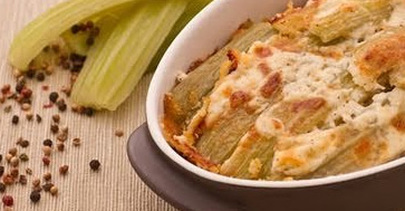 Cardoon Casserole Cardoon Casserole While in Italy, my son, Lucas and I came across a vegetable that we thought looked like stalks of celery--it was labeled cardy. Otherwise known as cardoon, it might also be found as artichoke thistle, cardone, cardoni, carduni, or cardi. A member of the sunflower family, the leaves are very much like the spiny thistle. There are many cultivated types but in some parts of the world it grows wild and can actually be an invasive species. In the western and central Mediterranean region it was domesticated in ancient times. Cardoon leaf stalks can be served steamed or braised, and taste very much like artichokes with some bitterness. Especially during the Christmas holiday, people from the Abruzzi region serve a traditional cardoon soup with meatballs in chicken broth. Often an egg is mixed into the soup (called stracciatella, my Dad used to love this). There are even casserole dishes which feature baked cardoon with onions, cheese or a bechamel sauce.  Spaghetti with agretti and lemon Spaghetti with agretti and lemon Agretti, also called Barba Di Frate (or Friar's Beard) in Italy are the edible grass-like leaves of the Salsola soda plant. Agretti is actually a cold weather green typically grown in saltwater irrigated land around the Mediterranean Basin. In the kitchen, it is boiled, then placed in ice water to preserve the color and eaten as a leafy vegetable. It has a slight crunch similar to sprouts. It can be eaten raw with its taste described as being grassy and a bit salty. The most common way to prepare after boiling is to dress with olive oil, salt and lemon for a refreshing side dish with fish or chicken. 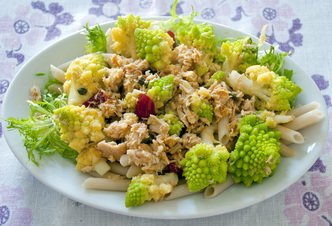 Let's state the obvious here... The coolest thing about Romanesco is its spiraling buds, each containing more even smaller buds (does the "Fibonacci sequence" ring a bell?). The Romanesco (often called Cavolo Romanesco Broccoli or Roman Cauliflower) is a product of genetic breeding by 16th century Italian farmers. Romanesco is in season during from late summer to early fall, and it can often be found at local farmers’ markets in the eastern coast of the United States. Although it looks like cauliflower with a similar texture, in fact, it tastes like broccoli. And as with most Italian recipes, simple is best. Boiled or steamed, florets tossed with pasta, lemon, olive oil and pepper and you have a great meal.  Cavolo nero is also known in Italy as Lacinato or Nero de Toscana, but can be found as black kale, black cabbage or Tuscan kale. It is related to its popular cousin, Cavolo Fiore (similar to cauliflower). It has long, deeply textured black leaves and was originally grown in Tuscany by the Etruscans in 600 BC. Very similar to kale, it is used in many traditional Italian dishes, from soups to main courses. Like with other kales, Cavolo Nero is blanched briefly in boiling water and then sautéed with EVO, garlic or anchovies. It can be used equally well in pasta dishes, salads (raw) and soups. In Tuscany, it is often an ingredient in a thick soup called ribollita. Here is a slideshow of images of Italy from the 1890s that used the very first color printing process called Photochrom, a technique which produced up to 6 limestone lithographic printing plates from original black and white photographic negative plates. Although at the time, an actual photographic color process (direct from cameras) was being developed, this was a much more affordable process to produce affordable postcards for wide distribution. Enjoy the look back in time... 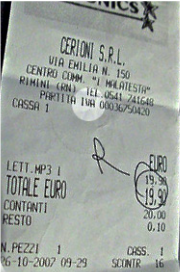 Note the "IVA" indicated in the circle--the tax is included in the purchase price Note the "IVA" indicated in the circle--the tax is included in the purchase price When shopping in Italy, or any country in the EU, you will always be paying the VAT (Value Added Tax), or, as it's called in Italy, the IVA. Look at the bottom of your Italian shopping receipt and you'll see the tax line item for the IVA. Keeping track of these receipts--and the tax you paid for your purchases--could save you money the next time you travel in Italy. All European Union have a VAT that they levy on purchases, with each country setting its own rate. The VAT rate in Italy is currently at 22%, and will rise to 24% in 2017. The tax is applied to travel expenses, meals, and merchandise. As you can see, that 22% can really start to add up. The good news is that if you are not a resident of the EU, you can get some of that VAT money back. You see, tourists aren't obliged to pay the tax, but because the VAT/IVA is incorporated into the price of nearly everything you purchase, the tax is simply part of the purchase price... the only way to get it back is filling out forms, and following the somewhat complex rules. What Purchases Qualify for a VAT Refund in Italy? First, you cannot get a refund on the tax on accommodations or food in Italy. There is an exception when traveling for business in Europe, but we won't get into that here. Any other purchases you make in Italy where you see the “IVA” added, are eligible for a VAT refund at the end of your vacation, including souvenirs, ceramics, clothing, jewelry, leather and even some services. Keep in mind that there’s a minimum amount required in order to claim an IVA/VAT refund--currently in Italy the minimum purchase amount to submit a VAT refund is €154.94--all spent in one store at one time. So, for instance, if I want to buy an Italian guitar while in Italy, this would fit right in. It would also work when buying ceramics in a single shop Vetri Sul Mare on the Amalfi Coast--a town with many ceramics craftsmen (but won't work if buying a few things in several different shops). There are many interesting and unique shops in Rome, Venice or Florence that have a wide array of gifts perfect for the Voyager--either for yourself or gifts for loved ones back home. Planing your shopping sprees in shops that have a wide array of products is a great way to make purchase in one shop beyond the €154.94 minimum. Other rules also need to be followed:
There are actually many merchants that will instantly remove the IVA tax as soon as you show them your Non-EU passport. Use your passport as leverage, making them believe you won't make the purchase if they won't remove the tax amount. This is one way to circumvent the entire refund process. But many vendors simply don't want to bother with the paperwork on their end. Keep in mind, however, that even if the merchant is willing to take the VAT amount off the purchase price, you’ll still need to get the receipt stamped at customs before you leave the country. Keep your receipts with each item purchased. How to Get a VAT Refund in Italy Here's why many people don't even bother about getting a refund--it can be a real hassle. First, you need to ask the vendor about getting a VAT refund before leaving the shop. They need to give you a separate receipt--a copy known as a fattura--in addition to the one that comes out of the cash register. The fattura should include your name (use your passport as I.D.) and the amount of the IVA/VAT tax for the purchase. If there are blanks on the “fattura” for you to fill out, ask what information you need to fill in. Keep all forms and receipts, including the additional “fattura” receipts, in a secure place. Ok... now part requires extra time at the airport when leaving Italy: Gather together all your purchases (a soft, collapsible duffle works well for smaller carry-on purchases that might be fragile or valuable), along with their respective receipts and forms and then bring them to the local customs office at the airport. When it’s your turn at the front of the special customs line, you’ll present all your receipts (and your purchased goods for inspection, if that’s required) and they’ll stamp everything. You then need to get those stamped receipts back to the merchant where you initially purchased the items. Yes--believe it or not. Many bigger stores work with companies with branches at airports and other international gateways in Italy (Global Refund and Premier Tax Free are two of the most common), which means you’ll need to take your stamped receipts to the appropriate agency’s office in the airport in order to get a refund on the VAT. You’ll either get a refund in cash right then, or they’ll refund your credit card. They take a small cut of the total amount. If, on the other hand, the merchant from whom you made your purchase doesn’t work with one of those in-airport agencies, then you’ll need to mail your receipts back to them directly, either from the airport before you leave or from home. I know what you're thinking... That you may never hear from the merchant again and never see a refund anyway. This is possible, but many shops are fairly honest and will honor the request for a VAT refund. You might get a refund sent to you in Euros, requiring a fee for converting to dollars again. Complicated, right? This is why many people forget about VAT refunds. It is a real hassle. Of course, this is even more incentive to use your Passport as leverage when making the original purchases... try really hard to get them to take the VAT off voluntarily, or you won't buy. It does work.  How Do I Avoid All This Hassle? The best way to avoid the hassle is to shop in stores that display a Tax Free Shopping or Euro Tax Free sign in their window. There are enough shops with this logo displayed in the larger Italian cities to satisfy your shopping needs. In these Tax Free Shopping stores, you’ll need to show your passport when you make your purchase, and they will give you a check for the VAT amount along with the receipt for the goods. When you get to the airport, you’ll need to go to the line at the customs office for VAT refunds and have your receipts stamped, and then take the receipts--along with the check the merchant gave you--to the “Tax Free” booth in the airport where they’ll give you cash for that check. These booths are typically near the airport’s Duty-Free Shop. That's a bit easier, right? Steps & Tips for Getting a Refund
Remember: Incomplete Tax Free Form = No refund
Remember: No Customs Stamp = No Refund
The refund you receive is the VAT minus Global Blue’s service fee.
Additional Tips
Tax Free Shopping Card... No need to fill in paperwork in shops! Ok, so after going through all of the above, here's an even simpler way to do some tax free shopping in Italy... Whether you’re a frequent international shopper or planning a special trip abroad, you can easily save both time and money when you shop tax free with the new Shop Tax Free Blue Card. Membership is free! The Shop Tax Free Blue Card allows you to claim your tax savings without the hassle of filling in Tax Free Forms by hand in busy shops each time you buy something. With a swipe of your card all your details will automatically be filled out on your Tax Free Form which is then printed out for you by the sales assistant. In this way, language communication problems and mistakes are avoided and you save time and money for a more convenient and enjoyable Tax Free Shopping trip. Global Blue works with around 270,000 stores worldwide so you can enjoy the benefits at participating shops and take advantage of member only promotions. LINK: Shop Tax Free Blue Card sign-up There's an App for Tax Refunds The Global Blue App from Google Play (for Android) and iOS (for iPhone and iPad) connects travelers to the world of Tax Free Shopping with just one click. Global Blue’s app will guide travelers to the very best stores in many European cities, with full contact details and interactive maps. You can search the app for stores by location, product or brand. The Global Blue App also helps a shopper to figure out their savings with the Tax Refund Calculator and step-by-step instructions on how to complete the Tax Free Shopping service. A re-engineered Refund Tracker is coming soon. Do a search in your favorite app store on Global Blue. So, there you have it... a fairly intensive introduction to getting your VAT taxes refunded in Italy. For more information: Global Blue Q&A
--Jerry Finzi You can also follow Grand Voyage Italy on: Google+ StumbleUpon Tumblr Copyright Jerry Finzi/Grand Voyage Italy - 2016 When I first heard of the concept of Jus Sanguinis, I was intrigued by the concept of having dual citizenship. I wondered why someone--especially an American--would want this. Were there any downsides? Benefits?
So I looked into it a bit. There are definitely benefits to having an Italian passport:
According to Italian law, a qualified person can claim their Italian citizenship through Jus Sanguinis, the Right of Blood. The basic principle is that Italian citizenship is passed from father (or mother, only since 1948) to their children, even if those descendants gained citizenship in another country (such as in the U.S.) simply by being born there. The key is that the ascendant born in Italy and who immigrated to the US must have been an Italian citizen (i.e. not been naturalized as a US citizen) when his or her child was born. Italian women did not win the right to pass on citizenship to their children until 1948. Therefore, people born prior to Jan. 1st, 1948, can only claim citizenship from their paternal line, while those born on or after Jan. 1st, 1948, can claim from either their maternal or paternal line. There are many circumstances under which a descendant of an Italian citizen can qualify, but it might be difficult to provide the dates and many documents to satisfy the Italian regulations. Many people who have attempted to get their Italian citizenship have reported the process can easily take a couple of years and well over $1000 in fees to research and gain copies of documents, and in hiring a representative in Italy to act on your behalf in obtaining all the required Italian documents. The Legal Principals Jus sanguinis is Latin for "the Right of Blood", a legal principle of nationality law in which citizenship is not determined by place of birth, but by having one or both parents who are (or once were) citizens of the state. Children at birth may automatically be citizens if their parents have (or had previously) state citizenship or national identities of ethnic, cultural or other origins. The nationality law of Italy bestows citizenship jure sanguinis. There is no limit of generations for the citizenship via blood. However, the first citizens of the modern Italian state were alive on 17 March 1861 when the state was officially formed, and for this reason all claims of Italian citizenship by jure sanguinis must stem from an ancestor who was living after March 16, 1861. Each descendant of the ancestor through whom citizenship is claimed jure sanguinis could pass Italian citizenship to the next generation only if this descendant was entitled to Italian citizenship at the time of the birth of the next person in the line. So if any person in the line lost the Italian citizenship and then had a child, that child did not inherit Italian citizen jure sanguinis, except if the child could inherit the citizenship from the other parent. Cases of dual citizenship were possible, which is to say, for example, that a person in the line could have had Italian and Canadian citizenship concurrently. Minor children of Italian citizens were at risk of losing Italian citizenship if the child's parent naturalized in another country, unless the child was subject to an exception to this risk—and children born and residing in a country where they held dual citizenship by jus soli were subject to such an exception since 1 July 1912. Until 1 January 1948, Italian law did not generally permit women to pass on citizenship. Persons born before that date are in most cases not Italian citizens jure sanguinis if their line of descent from an Italian citizen depends on a female at some point before 1948. On several occasions, this limitation of deriving Italian citizenship only from fathers before 1948 has been successfully challenged in court. For more information: MyItalianCitizenship.com Read this case history of how one person succeeded in getting their Italian citizenship. --Jerry Finzi You can also follow Grand Voyage Italy on: Google+ StumbleUpon Tumblr
Funiculì, funiculà was written in 1880 by Luigi Denza. The text of the song was inspired by the opening of the first cable car built in 1879, to reach the top of Mount Vesuvius. The song describes the advantages offered by the new means of transport, which allows tourists to climb, without effort, to admire the view from the summit of the ancient volcano.
Over time, the melody became famous all over the world. Click HERE for more on Italian funiculars.  Picnics are thought of as an All-American invention, but in truth, the word began life in France. A 1692 edition of Origines de la Langue Françoise de Ménage is the first time the word Piquenique was ever seen in print. In French, the word piquer means to bite, pick or dip. Nowadays, in both France and Italy the word picnic is commonly used, although in Italy you may go on a scampagnata--an outing. The published use of the word outside the French language was in 1748, but picnic was rarely used in English prior to 1800. Even still, "picnic" was not used in America, either as a word or a concept. Around the same time in England, the word "picnic" was used to describe a social event for the upper classes similar to a pot-luck gathering, but was not held outdoors. As time passed, the outdoor element became more and more a part of what a picnic is today... not necessarily a gathering of people sharing food they all contributed, but a casual meal held outdoors in a peaceful, natural location. For most, the location of the picnic is as important--if not more so--than the food they are going to eat. Curiously, in France (in my opinion) the piquenique has de-volved into merely a necessity when traveling. I can't tell you how many times when traveling 3000 miles throughout the French countryside I saw cars pulled over alongside of the ugliest, dirtiest, un-scenic stretch of highway--with cars buzzing past--with lunches set up on folding tables (with chairs) pulled from their trunks. Entire traveling families chomping down their quick meal--all without the slightest regard for the aesthetics of the location. Weird. Now, contrast that with Italians... They choose a place with a view. It might be as simple as church steps having their bread and cheese and watching people walk by, or spreading a blanket at the side of a vineyard and having a simple feast while just gazing down at the wonders of nature and man, or sitting at the edge of an old castle wall atop one of the countless hilltowns across Bella Italia. Workers will spread their handkerchiefs out to hold their bread, cheese, perhaps a Tupperware lunch from home that the wife made and afterwards lie down under a shady tree for a nap. Remember, lunchtimes are hours long in Italy. Once I saw some workers sitting on top of their scaffolding having their boxed lunches picnic style, while enjoying the view of the valley below from their bird's nest perch. To me at least, it seems that the picnic really started in Italy... long ago with the Romans. They knew how to enjoy simple foods barely a step away from nature itself--and they knew how to keep cool. After all, that's what alfresco means in Italian: cool... fresh. When Romans ate outdoors under the shade of a thousand year old olive tree, it was more than likely done in the heat of the day--to keep cool as they feasted. All over Italy during harvest times of the year (different times for different crops), rural farming families and neighbors still throw a sheet or blanket on the ground in the shade, gather together bread, wine, olives, cheese and sausages from whoever brought this or that... and they have their picnic. Except they don't think of it as a picnic. It's just a way of life. A way of refueling the body and soul with good food, good neighbors and family... and wonderful views of nature, which thankfully in Italy are just about everywhere you look. So, the next time you think of having a picnic, think of the Romans... think of the Italians... and bring together not the most complex foods, but the simplest. A great piece of cheese. Some ripe fruit. Crusty bread and wine---and olives. Some of your favorite sausage... and a knife, and some simple glasses or plastic cups. No fine crystal here. Just look for a place with a view of the sky, some water, some beautiful inspiring architecture... drop a bandanna on your lap or a sheet on the ground or just sit on a bench. Then add a friend or two, your children, your lover... and eat. Slowly. Taste each bite and then use your eyes as you would some wine in your mouth to mix the flavors and heighten your senses. I've taught Lucas to put a morsel of your food in your mouth, chew a bit to release flavors and then (and only then) sip a bit of wine to mix with the flavors... and a new, complex flavor is born. It's like that with picnics. Mix what you see and feel in your surroundings with your food... and find some new flavors in your entire spirit. Buon picnic! --Jerry Finzi If you enjoyed this little picnic with use, please tell all your friends to stop by Grand Voyage Italy. Grazie! You can also follow Grand Voyage Italy on: Google+ StumbleUpon Tumblr Copyright 2016 - Jerry Finzi - All Rights Reserved from todayprimetimes.com The Tomato Tree is also known as the Cyphomandra Betacea Sendt. This plant is the most well known among the family of 30 species. It is included in the family of Solanaceae. It is known of different names all over the world. Some of the names are the tree tomato, tomate extranjero, tomato granadilla, tomate, pix, granadilla, caxlan and tomate de arbol. However, shorty after the plant was found in New Zealand, it was named tamarillo and in the commercial world, it is known by that name ever since. The tomato tree is smaller than other trees however it is different from the other tomatoes as it has a branch that is half woody. This plant has an attractive look. It has the ability to grow quite fast but it has shallow root and might be perfect to be paired with other deep rooted plants. When fully grown, the plant can reach 10 to 18 feet in average or 3 – 5.5 meter. However, there has been noted that some of the biggest tomato tree can reach the height of 25 feet or 7.5 meter. This brittle tree has musky, odorous, heart-shaped leaves.  The fruits of the tomato tree are long stalked and can be borne single or also in clusters of as little as 3 and as many as 12. The fruits are not round like most of the tomatoes, rather it has an oval egg shaped like. There are quite a variety of fruit skin colors. There are the blood red, yellow, orange, solid deep purple and a mix or red and yellow. However, the skin of the fruit is tough and is not pleasant, therefore, one will need to peel the skins before consumption. The tomato tree is not a tropical plant, rather it is a subtropical one. It has the ability to grow healthily on the land that is of 5000 to 10000 feet above sea level in Ecuador, or 1000 – 3000 feet in Puerto Rico, 1000 to 7500 feet in India, and 6000 feet in Haiti. Among those areas, it is in Haiti that the fruit can grow the best. It needs the temperature of above 10 degree Celsius to grow. When there are frosts, the small branches will be killed, but the main branches as well as the main stem will live if the frost is not too long or too frequent. |
Categories
All
Archive
June 2024
|




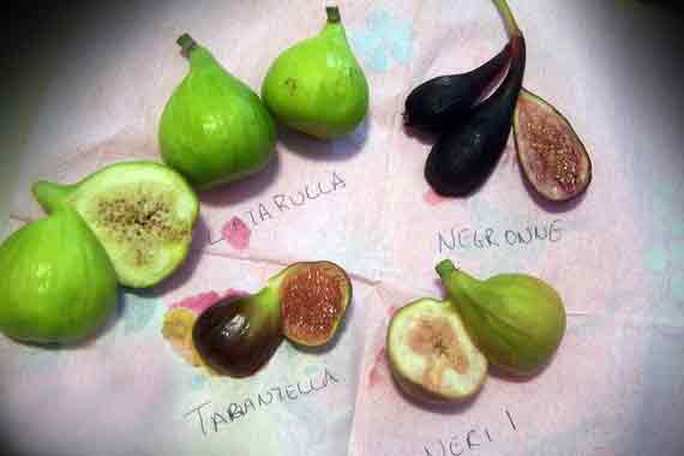




























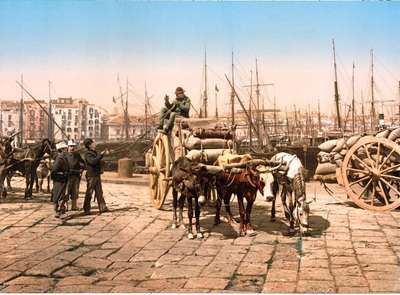



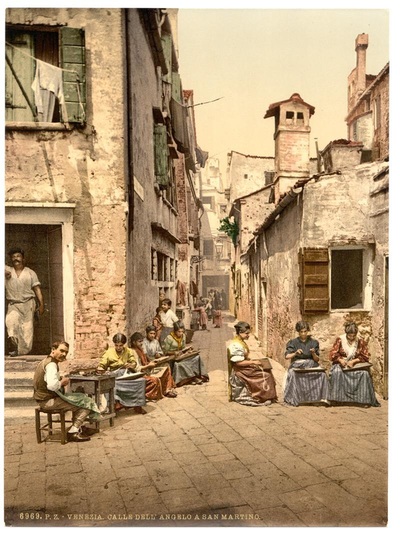






















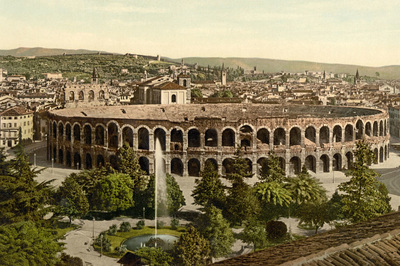



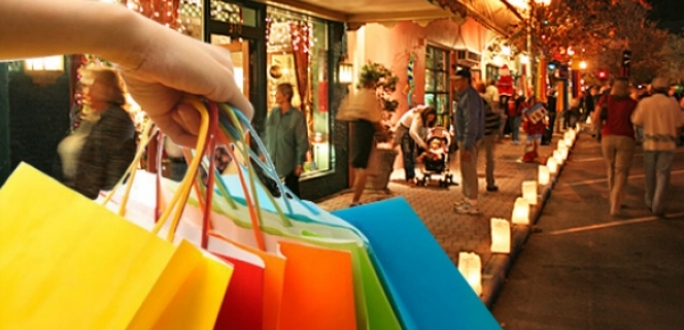


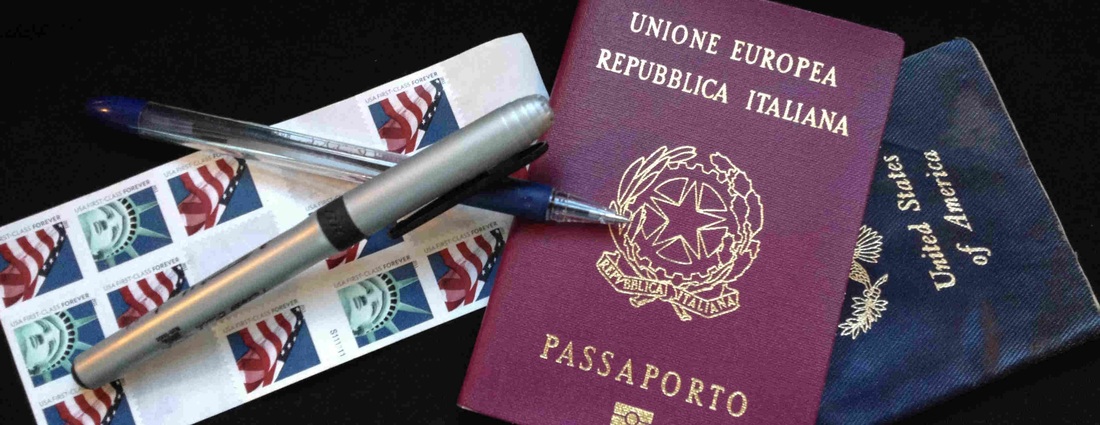





 RSS Feed
RSS Feed
